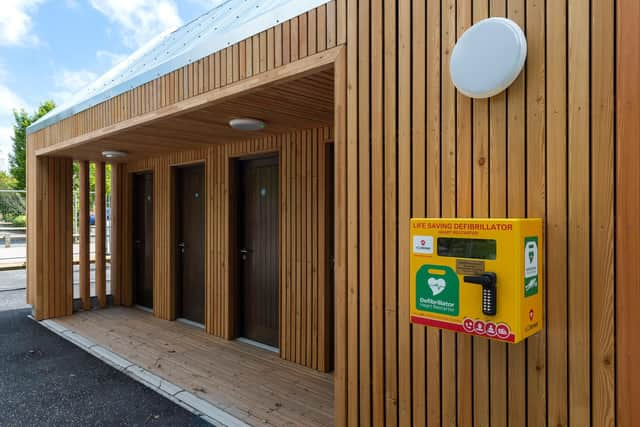Aberdeenshire Council reviews policy on installation of public access defibrillators
To help someone who is in cardiac arrest effectively, a defibrillator needs to be found as quickly as possible.
Aberdeenshire Council has recently reviewed and updated its policy to facilitate requests from community groups who want to site a defibrillator on the outside of a council property, provided it is not a listed building.
Advertisement
Hide AdAdvertisement
Hide AdInformation on where to go for more advice, possible sources of funding, the process to be followed and, most importantly, how community groups register their PADs on the national defibrillator database can all be found on the council’s website www.aberdeenshire.gov.uk/communities-and-events/heartstart-pad/


A Public Access Defibrillator is designed to administer an electric shock to a person who is having a cardiac arrest.
If you see someone having a cardiac arrest, call 999 first, then start CPR and get someone else to find a defibrillator. The emergency services operator will help you to locate the nearest PAD by checking The Circuit database.
PADs are designed to be used by non-medical personnel to save lives and provide audible instructions and sometimes visual prompts on a screen. A PAD will not allow a shock to be given unless it is needed, meaning it is extremely unlikely that it will do any harm to the person who has collapsed.
A list of PADs registered with the Scottish Ambulance Service can be found at www.defibfinder.uk
Council Leader and chair of the Business Services Committee, Cllr Gillian Owen, said: “Public access defibrillators are known to have saved many lives both here in Aberdeenshire and across the country but it is crucial that our communities know where they are located to ensure they can be located and used in such emergency situations. The more defibrillators registered the greater the chance it could save someone’s life and by reviewing and strengthening our policy we hope it will encourage more communities to get them installed.”
Community groups can check if their device is registered and if not there is an easy process to follow at www.thecircuit.uk